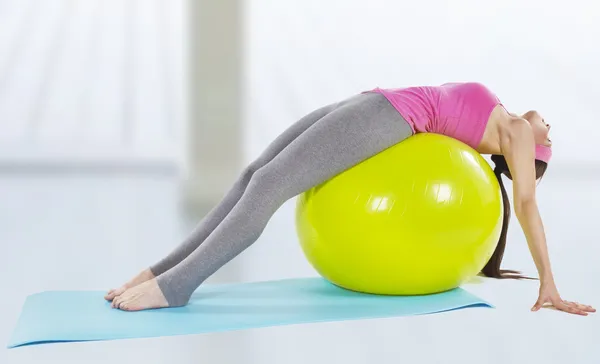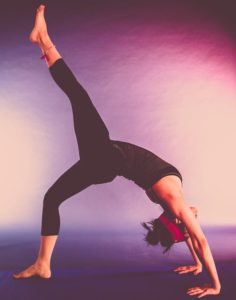Functional Fitness Training: What Is It, How Does It Work, and Its Benefits
Functional fitness training has gained immense popularity in recent years, and for good reason. It’s a fitness approach that focuses on improving your ability to perform daily activities and movements with ease and efficiency.
Let’s delve into what functional fitness training is, how it works, and the numerous benefits it offers.
What Is Functional Fitness Training?
Functional fitness training, often simply referred to as functional training, is a workout regimen that aims to improve your overall physical functionality in everyday life.
Unlike traditional strength training that may isolate specific muscle groups, functional fitness focuses on multi-joint movements and exercises that mimic real-life activities, such as bending, lifting, twisting, and reaching. These exercises aim to enhance your strength, balance, flexibility, and endurance in a way that directly translates to improved performance in daily tasks and activities.
How Does Functional Fitness Training Work?
Functional fitness training is based on the principles of movement specificity and practicality. It involves a variety of exercises and movements that challenge multiple muscle groups and promote whole-body strength and coordination.
Here’s how it works:

1. Multi-Joint Movements: Functional fitness exercises often involve compound movements that engage several muscle groups simultaneously. For example, a squat not only targets the quadriceps but also works the glutes, hamstrings, and core.
2. Functional Movements: The exercises used in functional fitness training mimic real-world activities. For instance, a deadlift is similar to lifting a heavy object off the ground, while a medicine ball twist replicates the action of reaching and twisting to grab something.
3. Core Engagement: Core strength and stability are central to functional fitness. Many exercises require you to engage your core muscles to maintain balance and control.
4. Balance and Coordination: Functional fitness exercises often challenge your balance and coordination, helping to improve these crucial aspects of physical fitness.
5. Adaptability: Functional fitness workouts can be tailored to your fitness level and specific goals. Exercises can be modified to make them easier or more challenging, making it accessible to individuals of all fitness levels.
Benefits of Functional Fitness Training:
Improved Everyday Functionality:
The primary benefit of functional fitness training is its direct application to daily life. You’ll find that everyday tasks like carrying groceries, bending to tie your shoes, or playing with your children become more manageable and less physically demanding.
Enhanced Core Strength:
A strong core is vital for good posture, balance, and stability. Functional fitness exercises, such as planks and Russian twists, strengthen your core muscles, reducing the risk of back pain and improving overall posture.
Increased Flexibility:
Many functional fitness exercises involve stretching and mobility work, which can lead to increased flexibility. Improved flexibility is essential for preventing injuries and maintaining joint health.
Better Balance and Coordination:
Functional fitness exercises challenge your balance and coordination, which are critical for fall prevention, especially in older adults.

Enhanced Muscle Engagement:
Functional training targets multiple muscle groups, leading to balanced muscle development and improved overall strength.
Fat Loss and Weight Management:
Functional fitness workouts often incorporate high-intensity intervals, which can be effective for burning calories and promoting fat loss.
Injury Prevention:
By strengthening muscles and improving balance and coordination, functional fitness can reduce the risk of injuries, particularly in sports and physical activities.
Increased Athletic Performance:
Functional fitness can enhance performance in various sports and recreational activities by improving overall strength, agility, and endurance.
Sample Functional Fitness Exercises:
Squat: Targets the legs, glutes, and core. It’s a functional movement for sitting and standing.
Deadlift: Works the lower back, glutes, hamstrings, and core. It mimics lifting objects from the ground.
Push-Up: Engages the chest, shoulders, triceps, and core. It’s a pushing movement similar to activities like pushing a heavy door open.
Lunge: Focuses on leg strength and balance. It simulates walking or climbing stairs.
Plank: Strengthens the core, shoulders, and back, which is essential for maintaining good posture.
Farmer’s Walk: Involves carrying weights in each hand, improving grip strength and simulating carrying heavy bags or groceries.
The Take Away
Functional fitness training is a holistic approach to fitness that emphasizes movements and exercises that directly translate to improved daily functionality.
By incorporating multi-joint movements, balance challenges, and core engagement, you can enhance your overall strength, flexibility, balance, and coordination. The practical benefits of functional fitness extend beyond the gym, making it an excellent choice for individuals looking to improve their quality of life and reduce the risk of injury in daily activities.
Whether you’re a fitness enthusiast or just starting your fitness journey, consider adding functional fitness training to your routine to reap these numerous benefits.











More Stories
Aerobics for Beginners
Post-Workout Recovery: Are You Doing It Wrong?
Weight Loss Through HIIT Exercise